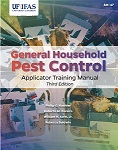There are 744 ACEs and 430 BCEs as of a few days ago. The list of our newest certified individuals is below:
New ACEs:
Mrs. Kathy Burnard, ACE, (Compass Pest Management), Riverside, CA USA. Certified on 11/19/2013.
Mr. John Burnard, ACE, (Compass Pest Management), Riverside, CA USA. Certified on 11/19/2013.
Mr. Timothy Arthur Palmatier, ACE, (Pest RX), Riverside, CA USA. Certified on 11/19/2013.
Mrs. Dawna Lee Galvin, ACE, (Western Exterminator Company), El Monte, CA USA. Certified on 11/21/2013.
Mr. Chris Kalsbeek, ACE, (Advanced IPM), Roseville, CA USA. Certified on 11/22/2013.
Mr. Joey Hoke, ACE, (American Pest Management), Manhattan, KS USA. Certified on 11/25/2013.
Mr. John Morin, ACE, (Ribbit Pest Control), El Cajon, CA USA. Certified on 12/3/2013.
Mr. Aaron C. Eubank, ACE, (Titan Pest Control), Anthem, AZ USA. Certified on 12/5/2013.
Mr. Robert Anthony Durham, ACE, (Clients 1st Termite and Pest Control), Oceanside, CA USA. Certified on 12/5/2013.
Mr. Robert F. McGee, ACE, (A1/Able Pest Doctors), Dayton, OH USA. Certified on 12/6/2013.
Mr. Joseph Randy Martin, ACE, (Hometec Exterminating), Alpharetta, GA USA. Certified on 12/6/2013.
Mr. Jeremy H. Miller, ACE, (Advanced Services for Pest Control), Augusta, GA USA. Certified on 12/6/2013.
Mr. Samuel Soto, ACE, (First Rate Solutions Inc.), New Windsor, NY USA. Certified on 12/7/2013.
Mr. Lloyd Garten, ACE, (Select Exterminating), Franklin Square, NY USA. Certified on 12/7/2013.
Mr. Isaac M. Gibson, ACE, (Assured Environments), New York, NY USA. Certified on 12/7/2013.
Mr. Eric John Rowan, ACE, (Banzai De Bug Pest Management), New York, NY USA. Certified on 12/7/2013.
Mr. George T. Ladd III, ACE, (Banzai De Bug Pest Management), Syosset, NY USA. Certified on 12/7/2013.
Mr. William Clark, Jr, ACE, (Thomas Pest Services), Albany, NY USA. Certified on 12/7/2013.
Mr. Christopher M. Sackett, ACE, (Orkin Pest Control), Henrietta, NY USA. Certified on 12/7/2013.
Mr. Paul M. Trisket, ACE, (Southern Tier Pest Control), Binghamton, NY USA. Certified on 12/7/2013.
Mr. Mark Gilbert Moser, ACE, (Orkin Pest Control), Amherst, NY USA. Certified on 12/7/2013.
Mr. Brian Mongillo, ACE, (Parkway Pest Services), New Hyde Park, NY USA. Certified on 12/7/2013.
Mr. Joseph Ferrandino, ACE, (TNR Exterminators, Inc.), Brooklyn, NY USA. Certified on 12/7/2013.
Mr. Donald R Bergquist, ACE, (Select Exterminating Company), Franklin Square, NY USA. Certified on 12/7/2013.
Mr. Patsy L. Sposato, ACE, (Parkway Exterminating Co. Inc.), New Hyde Park, NY USA. Certified on 12/7/2013.
Mr. Edward J. Sheehan, ACE, (Colony Pest Control), Rockaway Point, NY USA. Certified on 12/7/2013.
Mr. Garry G. Milsom, ACE, (Delsea Termite and Pest Control), Kenvil, NJ USA. Certified on 12/7/2013.
Mr. Vincent A. Masi, Jr., ACE, (Orkin Pest Control), New Hyde Park, NY USA. Certified on 12/7/2013.
Mr. Joel Nolasco, ACE, (Nuborn Pest Control LLC), Mamaroneck, NY USA. Certified on 12/7/2013.
Mr. Gary C Blossick, ACE, (Nardy Pest Control, Inc.), Southampton, NY USA. Certified on 12/7/2013.
Mr. Andrew Witcher, ACE, (ScorpionTech Termite & Pest Control, Inc.), Mesa, AZ USA. Certified on 12/10/2013.
Mr. Michael H. Rogers, ACE, (America Pest Management), Fulton, MD USA. Certified on 12/10/2013.
New BCE:
Dr. Freder Medina, BCE, (BASF Corporation), Phoenix, AZ USA. Certified on 12/6/2013.
 I've talked a little bit before about podcasts that intersect with entomology. Last night I came across a great one from Story Collider. They offer podcasts of people telling stories live in front of an audience about how science has impacted their lives. There are many great ones that I have listened to over the past year, but one that stands out is this one by Harvard entomologist Richard Pollack who relates the story of a huge fly problem near the Jordan and Israeli border. I won't spoil the story, but suffice it to say the application of IPM principles rather than a "chemical solution-first" mindset really saved the day.
I've talked a little bit before about podcasts that intersect with entomology. Last night I came across a great one from Story Collider. They offer podcasts of people telling stories live in front of an audience about how science has impacted their lives. There are many great ones that I have listened to over the past year, but one that stands out is this one by Harvard entomologist Richard Pollack who relates the story of a huge fly problem near the Jordan and Israeli border. I won't spoil the story, but suffice it to say the application of IPM principles rather than a "chemical solution-first" mindset really saved the day.









